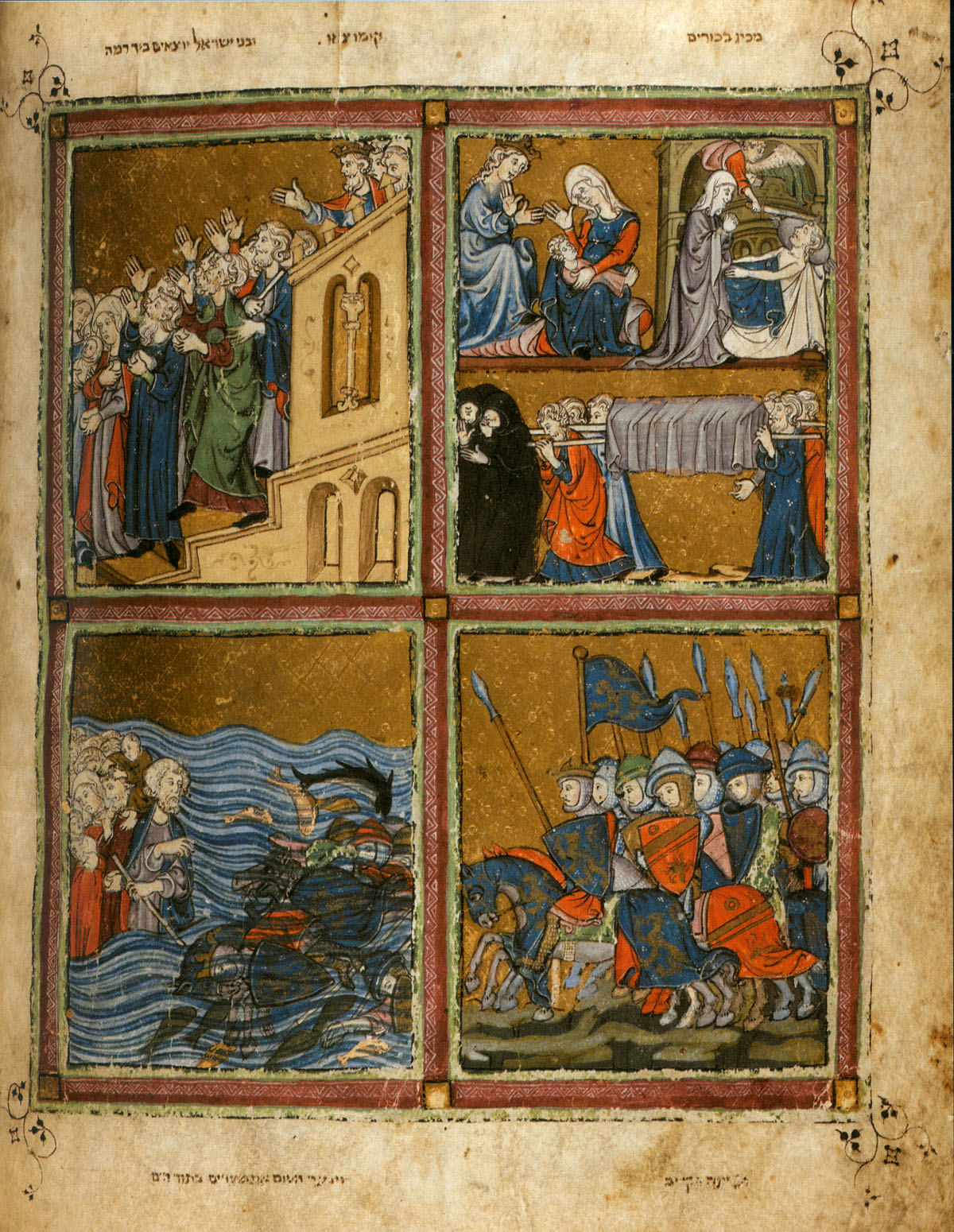All AP Art History Resources
Example Questions
Example Question #1 : Identifying Artists, Works, Or Schools Of Gothic 2 D Art
The Wilton diptych is a famous medieval portrait of the monarch __________.
Edward III of England
Margaret, Queen of Denmark, Norway, and Sweden
Richard II of England
Charles VI of France
Richard II of England
The Wilton diptych is a piece of medieval art for remarkable for being a surviving example of the traveling altarpiece. Made for and featuring King Richard II of England, who ruled between 1377 and 1399, the Wilton diptych is a two-paneled piece with one side featuring the Madonna and Child surrounded by angels, facing Richard with three saints, John the Baptist, and the English Kings Edmund the Martyr and Edward the Confessor. Richard was an avid patron of the arts and collector of paintings.
Example Question #62 : Ancient Through Medieval 2 D Art
The most common medium for depicting scenes behind an altar in a medieval church was the __________.
stained glass
mosaic
fresco
panel painting
panel painting
In Medieval churches, the altar was directly behind the priest for the entirety of the mass, which made it the spot where every member of the congregation looked for the entire service; however, the altar was not generally an architectural feature built into the church, but something placed in later, often paid for by powerful patrons of the church. The altar piece in such a situation was a panel painting, a piece of art made on wood, usually depicting Christ, the Virgin Mary, or the patron saints of the town or church.
Example Question #63 : Ancient Through Medieval 2 D Art
The Wilton Diptych, a religious panel painting depicting King Richard II of England with the Virgin Mary and his patron saints, is a foremost work of the style known as __________.
International Gothic
Merovingian
Carolingian
Early Netherlandish
International Gothic
International Gothic was the fullest development of Gothic art, beginning in Bohemia and then spreading throughout Western Europe thanks to royal marriages and the hiring of foreign artists. The Wilton Diptych is one of the chief surviving examples of the International Gothic style, and shows the signature elements of the genre, including prominent placement of saints and the Virgin Mary in close proximity to a monarch.
Example Question #2 : Identifying Artists, Works, Or Schools Of Gothic 2 D Art

The work shown here is part of a genre known as ________________.
woodblock printing
triptych
etching
illuminated manuscripts
illuminated manuscripts
Illuminated manuscripts were widely created throughout medieval Europe by a variety of religious groups, especially used with liturgical texts. This work, the Golden Haggadah, was produced for the Jewish community in Spain as a guide for the liturgy for a Passover seder. Considering the wide amounts of illiteracy in medieval Europe, containing detailed images of the story written in the manuscript allowed the entire community to understand what was contained in the work.
Image is in the public domain, accessed through Wikipedia Media Commons: https://commons.wikimedia.org/wiki/File:Enluminure_Sefarade,_Haggadah_a.jpg
Example Question #3 : Identifying Artists, Works, Or Schools Of Gothic 2 D Art

This page from The Golden Haggadah shown above is most similar to which of the following works of art?
The Lindisfarne Gospels
The Reliquary of Sainte Foy
The Röttgen Pieta
The Bayeux Tapestry
The Lindisfarne Gospels
The Golden Haggadah is an illustrated manuscript, as are The Lindisfarne Gospels. While separated by hundreds of miles and about 600 years, and made for two different religious traditions, each piece of art served a similar function. While presenting a religious text, each work also provides a great amount of illustrations which enhance and relate to the written text.
Image is in the public domain, accessed through Wikipedia Media Commons: https://commons.wikimedia.org/wiki/File:Enluminure_Sefarade,_Haggadah_a.jpg
Example Question #4 : Identifying Artists, Works, Or Schools Of Gothic 2 D Art

Based on the style and composition, to which European period of art does this work belong?
Gothic
Renaissance
Byzantine
Baroque
Gothic
The figures in this work of art, the Golden Hagganah, are representational, but still largely rough and lacking in perspective, although the work is embossed with fine detail and rich golden color. This manner of drawing and detail is highly characteristic of Gothic art, the predominant style of art in Western Europe from roughly 800 to 1350 CE. Additionally, this work of art is an illuminated manuscript, which was one of the most common forms of art in the middle ages.
Image is in the public domain, accessed through Wikipedia Media Commons: https://commons.wikimedia.org/wiki/File:Enluminure_Sefarade,_Haggadah_a.jpg
All AP Art History Resources




